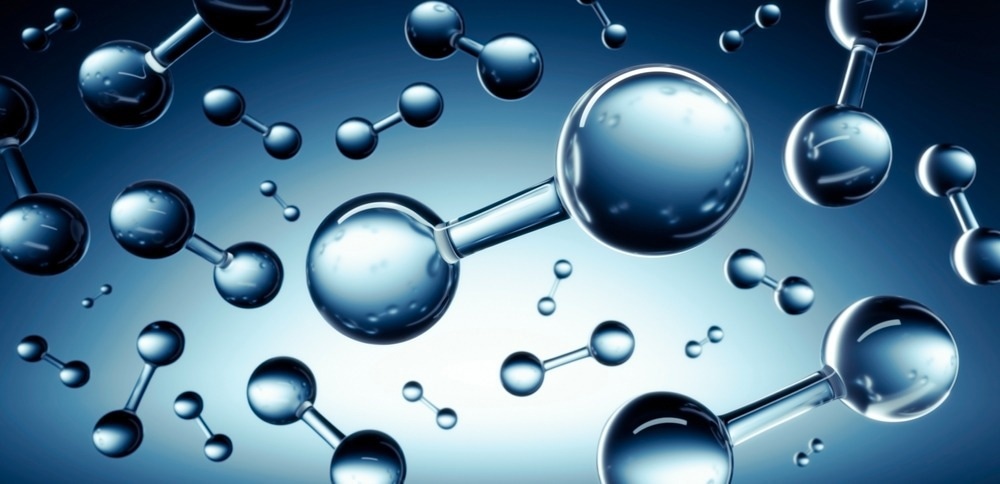Water splitting has recently received much attention as an eco-friendly and economical method of producing hydrogen energy. Materials with diverse compositions, sizes, and interfaces are significant in discovering appropriate compounds for electrocatalysis and photocatalysis.

Study: Nanoscale hetero-interfaces for electrocatalytic and photocatalytic water splitting. Image Credit: peterschreiber.media/Shutterstock.com
Hetero-interfaces have the potential to not only address the drawbacks of single-phase materials but also to develop new capabilities for water-splitting applications.
A paper accepted for publication in the journal Science and Technology of Advanced Materials describes the foundational knowledge and experimental advancement in hetero-interface engineering for fabricating materials for water splitting via photocatalysis and electrocatalysis.
Hydrogen Energy: Why is it Important?
The fast-increasing usage of fossil fuels has resulted in significant energy problems and environmental degradation. Sustainable and renewable energy is critical to preserving clean and livable ecosystems in modern human society.
Molecular hydrogen is thought to be an excellent long-term source of energy. Because of its great energy density, hydrogen energy is anticipated to transform the world’s energy infrastructure in the future.
Hydrogen can be used effectively as a gaseous fuel to supplant fossil fuels, and it can also be utilized to preserve extra energy by integrating fluctuating sustainable power into the energy system.
The bulk of hydrogen is currently generated by converting natural gas with steam. However, the process’s usefulness is limited because of the creation of hazardous pollutants like carbon dioxide. Although biomass is a regenerative hydrogen resource, it cannot fulfill the need for large-scale hydrogen production.
As a result, efficient and ecologically acceptable hydrogen production techniques are urgently required to fulfill global energy demands.
Water Splitting for Generation of Hydrogen
Water splitting is a perfectly renewable and efficient method of generating hydrogen energy since hydrogen molecules can be formed by breaking water molecules using either sunlight or electrical energy.
Water splitting by photocatalysis and electrocatalysis provides the advantages of an infinite availability of water, large-scale production feasibility, and high selectivity of hydrogen production. Nonetheless, the hydrogen produced by photocatalysis and electrocatalysis contributes to less than 5% of the overall hydrogen production.
As a result, facilitating water splitting for widespread industrialization is a difficult task. Water splitting may be divided into two different interactions: the hydrogen evolution reaction (HER) and the oxygen evolution reaction (OER). However, splitting water by photocatalysis and electrocatalysis requires overcoming a highly energetic threshold due to the extremely stable nature of water.
Therefore, developing catalysts with excellent reactivity, low energy expense, and natural availability is critical for the broad implementation of water splitting technology.
Nanoscale Hetero-Structures for Water Splitting Applications
Recently, the construction of hetero-interface electrocatalysts by integrating numerous active constituents has attracted significant attention for various water-splitting technologies, notably photocatalysis and electrocatalysis.
In essence, a heterojunction is a structure with an interlayer formed by stacking or stitching together multiple components. The functionalities provided by the separate components result in the unique features of heterostructure substances.
Hetero-structures can significantly affect the intrinsic catalytic activity of separate components, resulting in unique physicochemical properties for specific procedures such as photocatalysis and electrocatalysis.
Highlights of the Current Study
In this paper, researchers evaluated recent studies on the concept, properties, and advancement of hetero-interfaces in electrocatalytic and photocatalytic water splitting. First, the fundamental concepts of water splitting by photocatalysis and electrocatalysis, as well as the major parameters influencing catalytic activity, were discussed.
The researchers then outlined the essential properties of hetero-interfaces based on their morphology and electrical structure and emphasized the critical functions of heterojunctions in water splitting through electrocatalysis and photocatalysis.
According to the researchers, hetero-interfaces can offer band symmetry, space charge isolation, low deposition energy obstacles, greater catalytic activity, and improved stability during the water splitting process.
Moreover, the water splitting process can be efficiently enhanced for the speedy generation of green hydrogen energy by strategically constructing the hetero-interfaces of catalysts.
Future Outlook
Despite significant advances in hetero-interfaces for electrocatalysis and photocatalysis, problems still need to be addressed before the widespread industrialization of water splitting technology.
For example, most available synthesis techniques make accurate control of the hetero-interface configuration impossible. As a result, a universal and simple-to-control synthesis method for heterostructures is urgently required. Furthermore, studying the catalytic reaction process at the interface is challenging owing to the intricacy of the junction and the unpredictability of the structure.
As a result, a well-defined interface and an in-situ means for observing the catalytic activity of heterostructures must be developed to ensure the broad applicability of the water splitting process.
Reference
Yang, B. et al. (2022). Nanoscale hetero-interfaces for electrocatalytic and photocatalytic water splitting. Science and Technology of Advanced Materials. Available at: https://doi.org/10.1080/14686996.2022.2125827
Disclaimer: The views expressed here are those of the author expressed in their private capacity and do not necessarily represent the views of AZoM.com Limited T/A AZoNetwork the owner and operator of this website. This disclaimer forms part of the Terms and conditions of use of this website.